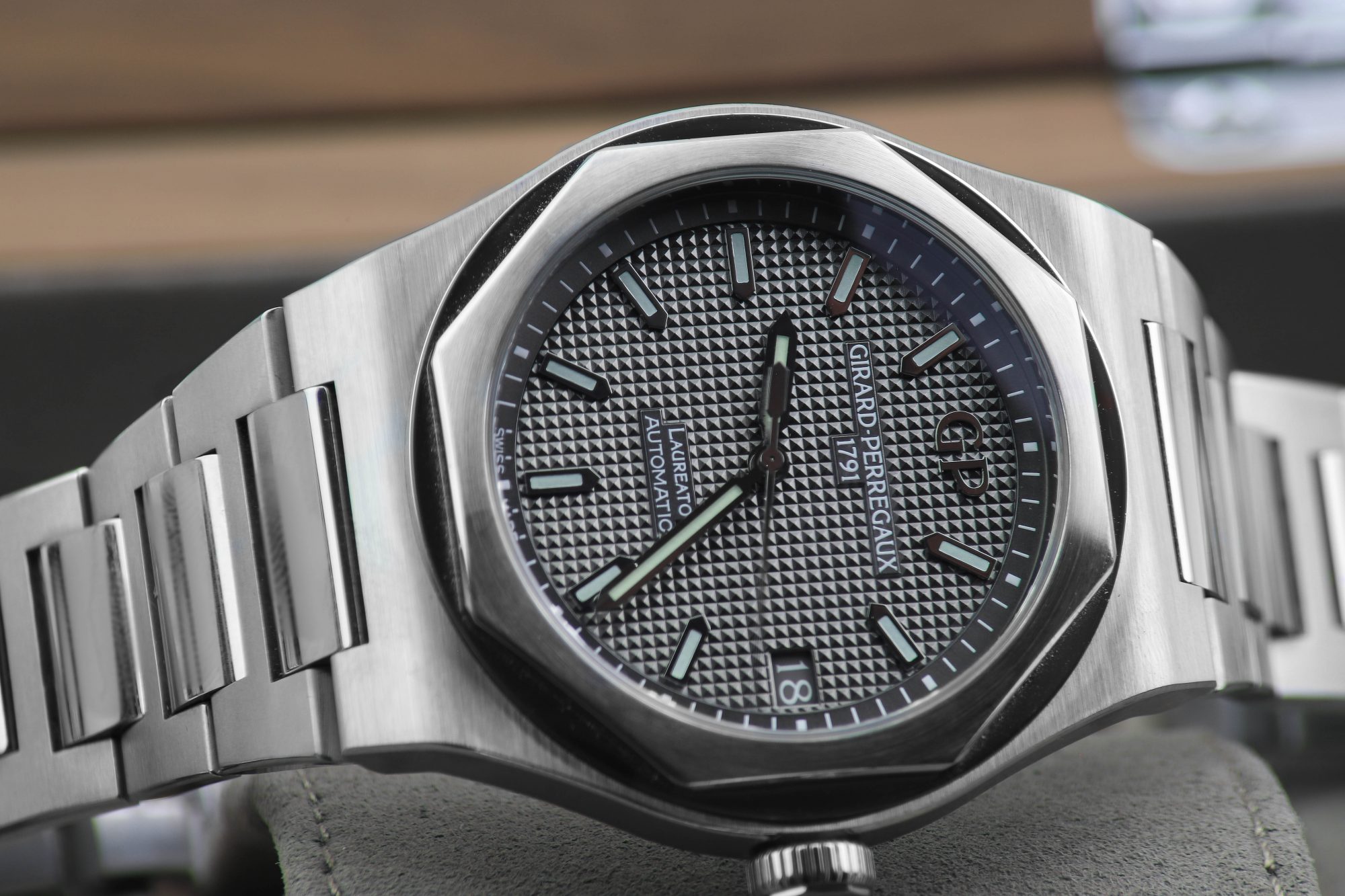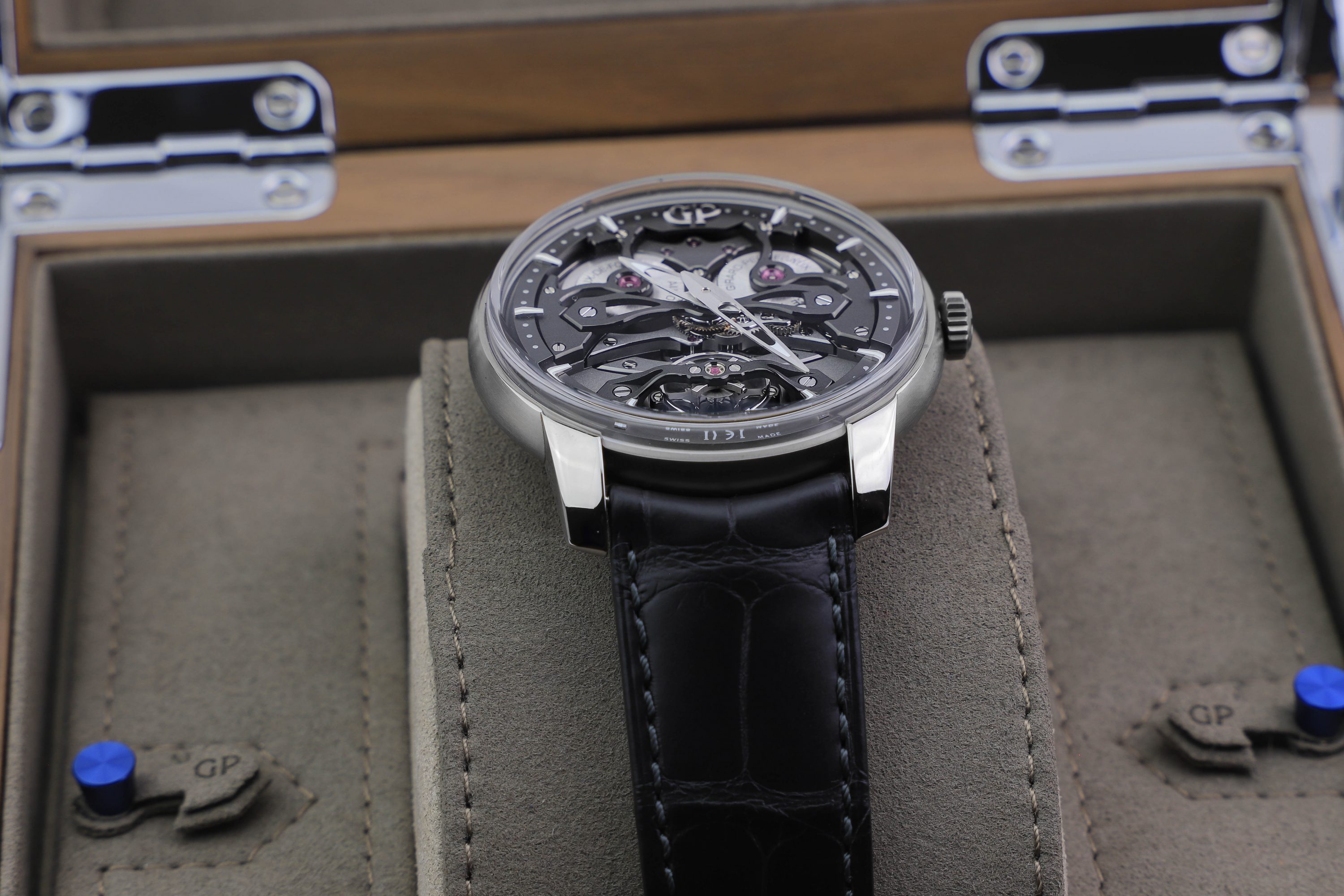
Top 12 Facts About Girard-Perregaux – Interesting Things to Know
Girard Perregaux is a Swiss Haute Horlogerie watch brand with a long and rich history. The company focuses on making fine timepieces with exceptional attention to detail and the art of watchmaking. But at the same time, Girard Perregaux is not as famous or well-known as some of the other brands in the same segment such as Vacheron Constantin or Audemars Piguet. However, that doesn’t mean that Girard-Perregaux watches are any less inferior.
The company is praised and appreciated, in particular, by those who appreciate fine watchmaking but prefer watches that “fly under the radar” and which not a lot of people know about. Girard-Perregaux makes considerably fewer timepieces than, for example, both Vacheron Constantin and Audemars Piguet. These watches are not mass-produced and are actually something positive for a lot of people. If you appreciate fine watches but want something that you are unlikely to see someone else wearing, then Girard-Perregaux is a great choice.
Still, with its long history and rich heritage, Girard-Perregaux is a watch company that is certainly worth highlighting. If you are looking to learn more about the GP brand, you have come to the right place. In this article, we are taking a closer look at the most interesting facts about Girard-Perregaux, its watches, and its history.
Top interesting facts about Girard-Perregaux
1. Girard-Perregaux is one of the oldest watch brands
Girard-Perregaux is a watch brand with a long and rich heritage. As a matter of fact, GP was founded in 1791, making it one of the oldest watch brands in the world.
GP has been a driving force in the industry ever since it was founded and has, with its long history, played a role in developing Swiss watchmaking history.
The history of Girard-Perregaux starts with Jean-François Bautte who was a Swiss watchmaker who established his watchmaking firm in Geneva in 1791. Jean-François Bautte became a very popular and well-known watchmaker. Bautte was an innovator and a leader who, amongst other things, invented extra-thin watches. In 1852, Constant Girard, another Swiss watchmaker created the company Girard & Cie in 1852. In 1954, Constant married Marie Perregaux, who came from a family of watchmakers. Together, Marie and Constant founded the Girard-Perregaux Manufacture in 1856.
In 1906, Jean-François Bautte’s company was acquired by Girard. Constant Girard-Gallet, the son of the Constant Girard. At the time, the company was named Girard-Perregaux & Cie but then changed its name to Girard Perregaux. It is from the starting date of Constant Girard-Gallet that Girard-Perregaux has taken its founding date.
Girard Perregaux says the following:
“Our roots and history, since the time of founder Jean-François Bautte, have always linked closely movement creation, innovation and technology with the design and case. I could say that it is Girard-Perregaux signature. Melding perfectly design, technology, craftsmanship, innovations, know-how and tradition to propose timekeepers that are a true incarnation of the pure Swiss high watchmaking.”
2. Girard-Perregaux is a true haute horlogerie company
Girard- Perregaux may be relatively small compared to some of its competitors in the market. But nonetheless, this doesn’t mean GP’s watches are any less exceptional. Girard-Perregaux focuses on the history and the art of fine watchmaking and puts utmost respect to finishing and making sure every single timepiece is up to the strict standards that GP has. This also means that GP, as an Haute Horlogerie company, focuses on complications in various forms, which GP makes. In fact, GP has invented and created a number of complications as a result of its devotion to fine watchmaking and pushing boundaries.

3. Girard- Perregaux manufacturers about 12.000 watches per year
Girard-Perregaux manufactures approximately 12.000 watches per year. This may sound a lot but compared to some of its competitors, the number is quite low. Vacheron Constantin makes about 20.0000 watches per year and Audemars Piguet makes about 40.0000 watches per year.
So compared to its competitors in the same segment, GP makes considerably fewer watches. This is great news for everyone who wants to enjoy their fine timepiece with little chance that they will meet anyone else wearing it. It’s quite common to see someone wearing a Rolex, for example. But if you want to be truly unique, then it is unlikely that you will meet someone wearing a GP watch.
As such, GP has more and more become a brand for connoisseurs and enthusiasts who don’t care about “showing off”, but rather who wear a timepiece because they deeply enjoy and appreciate it and do not have to have a watch as a status symbol. After all, those who know will know, but the rest will not have any idea that a person is wearing a GP Haute Horlogerie timepiece.
4. Girard-Perregaux created one of the first Swiss quartz watches
The 1970s was a challenging time for the Swiss watch industry. The Japanese invented the quartz movement and were able to manufacture much cheaper and much more accurate timepieces than their mechanical, Swiss counterpart.
This caused a huge challenge for any watch brand that made mechanical watches, of which GP was one of them. To tackle the Japanese quartz watches, GP developed what was one of the first Swiss quartz watches in 1970. Most Swiss watch companies resisted quartz and were not fans of the technology. But GP gave it a try to see if this was the solution to take on the Japanese. Another important invention from GP came in 1971 when Girard Perregaux created a quartz movement vibrating at 32,768 hertz. This frequency became the universal standard for quartz watches to this day and GP was the inventor of it.
5. Girard-Perregaux is a true innovator
When you are a watch company that pays attention to the details and the art of fine watchmaking, it often leads to interesting new inventions. And that is exactly the case with Girard-Perregaux. The company has more than 80 patents under its name and is responsible for numerous achievements.
One such achievement is the introduction of a mass-production method. According to records and documents found, GP seems to have been the first watchmaker to begin using a mass manufacturing approach.
GP received an order for 2,000 wristwatches for the German navy in 1880 and this was a huge order for a relatively small watch manufacturer at the time. As such, GP needed to innovate and upgrade its manufacturing process. Subsequently, it led to, what is believed to be, the first mass manufacturing of a watch.

6. GP has had many prominent clients
Over the course of the brand’s history, GP has had many prominent individuals as clients. This doesn’t come as a surprise considering the prestigious reputation of GP, in particular during its early years.
The French writer Alexandre Dumas was a client of Girard Perregaux and even mentioned Jean-François Bautte’s name in some of his works. Other clients include Queen Victoria of the United Kingdom, King Farouk I, Ismail Pasha, and many more. Girard-Perregaux prominent clients partly reflect that GP only focuses on making the best and finest timepieces, but also reflect that their timepieces are up to par even for the most demanding clients.
7. Girard Perregaux is an innovator with movements
As mentioned, GP has continuously pushed boundaries and continued to innovate. The company created the Gyromatic High-Frequency movement in 1996 which was sent to the Bureaux Officiels de Contrôle de la Marche des montres, to be tested. It was certified as an observatory chronometer thanks to its great accuracy and performance. On top of this, it received a Bulletin de Marche from the observatory, a rating that is even stricter than COSC.
Girard-Perregaux started making high-frequency timepieces, operating at 36,000 bpm, allowing them to achieve a better frequency and performance. In modern times, Girard-Perregaux makes the 1966 series which has taken inspiration from these classic and historically important watches. They had simple, clean designs with ultra-thin profiles. The designs of today share many similarities with the original ultra-thin dress watches from which they have taken inspiration.

8. The Girard Perregaux factory is about 100 years old
The building that Girard Perregaux use as their factory today is about 100 years old and has a long and rich history. The headquarters is a separate building that is located just a few minutes of walk from the factory. The factory is a large and old building that has served as the home to several Swiss watch companies throughout the years. Girard Perregaux purchased the building and completely restored it to make room for all of its production needs.
9. Girard Perregaux’s ownership changed in 2022
Girard-Perregaux was owned by Sowind Group SA which also owns Ulysse Nardin. The luxury watch group Kering had a 100 percent stake in Sowing Group SA and therefore had full ownership of Giard-Perregaux. In 2022, however, Kering sold its 100 percent stake to the board of directors of Sowind, technically giving the company new owners, although the group remained the same.
10. Girard-Perregaux makes its own cases in-house
Far from all watch brands manufacture their own watch cases in-house, but Girard-Perregaux does. In the factory, GP has multiple CNC machines to take care of the manufacturing of the cases. Each machine has an identical counterpart – one for gold cases and one for steel cases.
11. Girard Perregaux has had ups and downs
Like any company, especially for those with a long history, Girard-Perregaux has had its ups and downs.
Girard Perregaux was essentially off the market for many years until it finally returned. During the 1970s. Girard-Perregaux was a very popular name. But in the coming decades, Girard Perregaux slowly but surely lost its position in the market. Some have said that it was poor marketing that caused the company to lose its place in the market. However, in 2016, after many years of being more or less gone from the market, Girard Perregaux returned. Today, Girard Perregaux has built its brand and built a reputation for itself.
12. The Laureato is Girard-Perregaux’s most iconic model
When most people think about Girard-Perregaux, they think about the Laureato. This is the company’s most important and iconic model – instantly recognizable with its distinct style.

The Laureato has a distinct integrated bracelet and a case design with a circular base and an octagonal bezel on top. The Laureato was originally launched in 1975 as a luxury sports watch, something that was a very new concept at the time. During the 1970s, as a result of the quartz crisis, Swiss watch brands needed to come up with something new and different. And one of those things were luxury sports watches, a concept that was new at the time, especially considering people associated luxury watches with gold and dress watches.
Bear in mind that the Audemars Piguet Royal Oak was launched in 1972 and the Patek Philippe Nautilus in 1976. With that said, the Laureato sits in between these two iconic sports watches.
To come up with the new design, Girard-Perregaux approached a Milanese architect who came up with the design of the Laureato, which translates to graduate. Its design combined two shapes, a circle, and an octagon. The watch model is named after the movie “The Graduate ” which is translated to “Laureato” in Italian. As the original design sketch reveals, much of its inspiration is drawn from the architectural world (unsurprisingly). Some people say that the Laureato is a blatant copy of the Audemars Piguet Royal Oak, but this is not the case. Whilst it probably served as inspiration, the architect designer sought inspiration from many different sources, including architecture.




